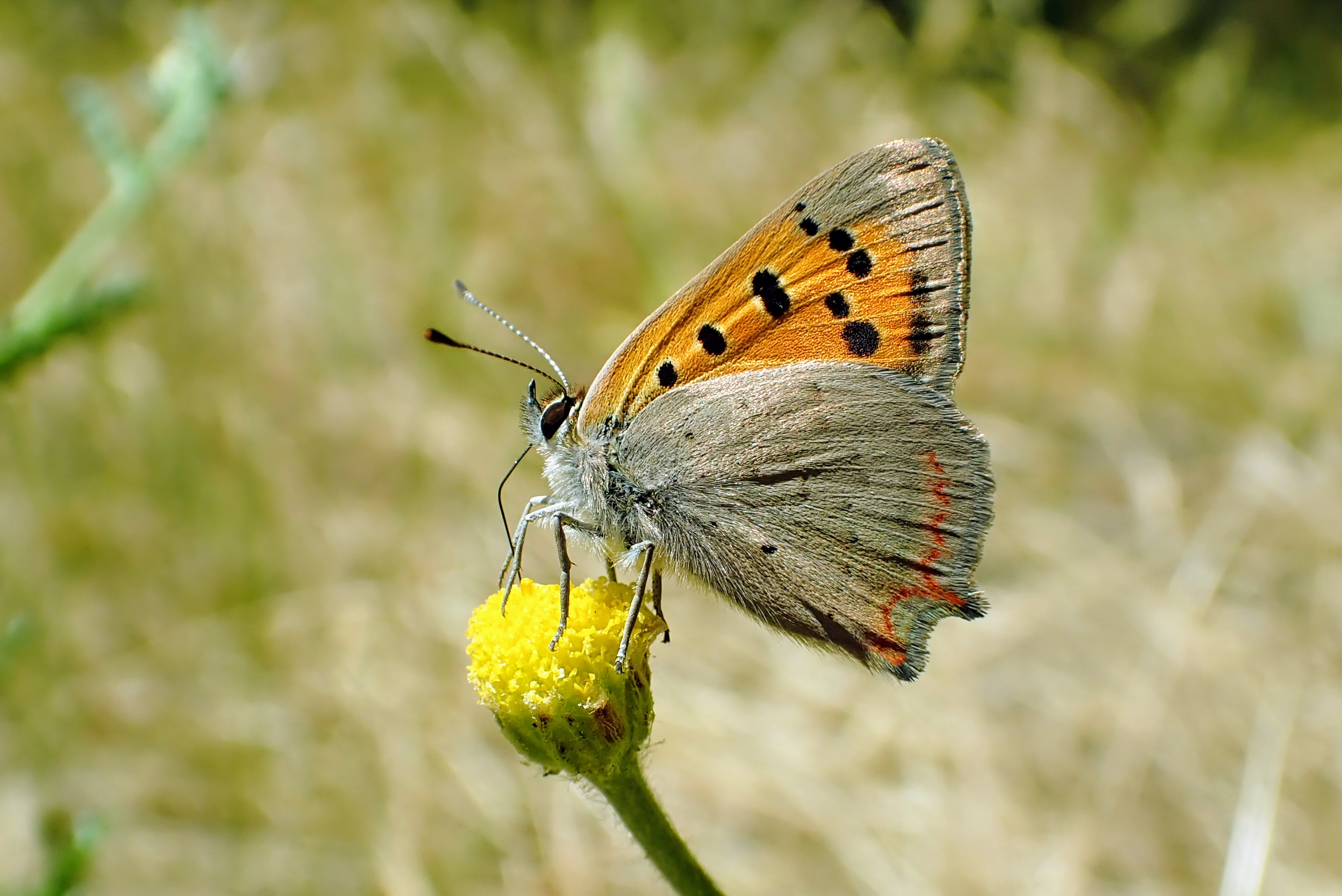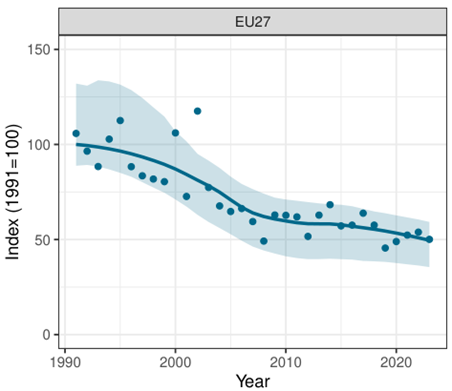Half of Europe’s grassland butterfly populations have disappeared since 1991
The ICTS Doñana contributes data from the Doñana Natural Area to pollinator monitoring across Europe

Small Copper (Lycaena phlaeas) in the Marismillas Estate (Doñana Natural Area). // J. Manuel Vidal-Cordero
The latest report on the state of grassland butterflies in Europe, published by the European Environment Agency and the Butterfly Conservation Europe network, reveals a 50% decline in grassland butterfly populations between 1991 and 2023. This indicator is based on more than 30 years of monitoring across 22 European countries and marks a sharper decline than the one reported last year, which showed a 30% drop up to 2020.
The findings are based on data from over 5,000 transects monitored annually across Europe. The ICTS Doñana, managed by the Doñana Biological Station – CSIC, contributes to this index by providing data from the Doñana Natural Area through the European Butterfly Monitoring Scheme (eBMS). This effort helps track the status of local grassland butterfly populations and strengthens the broader understanding of pollinator trends across the continent.
Grassland butterflies serve as indicators of semi-natural habitats such as meadows, scrublands, and agroforestry mosaics, signaling the degradation or disappearance of these ecosystems due to factors like agricultural intensification, abandonment of traditional land use, and widespread use of agrochemicals. Of the 17 common species analyzed in the report, more than half show significantly negative trends—including Erebia medusa and Melitaea cinxia. Only a few species, generally more resilient to landscape changes like Polyommatus icarus, exhibit stable or positive trends.
While some countries have reported signs of stabilization, the report highlights that declines are occurring not only in intensively farmed areas but also within protected zones. This underscores the urgent need for habitat restoration, improved ecological connectivity, and support for agroecological practices.
This indicator aligns with the goals of the Kunming-Montreal Global Biodiversity Framework, adopted by the United Nations, and serves as a key tool for tracking the conservation status of European ecosystems.

Reference
van Swaay, C., Schmucki, R., Roy, D., Dennis, E., Collins, S., Fox, R., Kolev, Z. D., G. Sevilleja, C., Warren, M. S., Whitfield, A., Wynhoff, I., Arnberg, H. J. H., Balalaikins, M., Barea, J. M., Boe, A. M. B., Bonelli, S., Botham, M. S., Bourn, N. A. D., Cancela, J. P., … Zografou, K. (2025). EU Grassland Butterfly Index 1991-2023 Technical report. Butterfly Conservation Europe & EMBRACE/eBMS (www.butterfly-monitoring.net) & Vlinderstichting report VS2025.014. https://doi.org/10.5281/zenodo.16367397